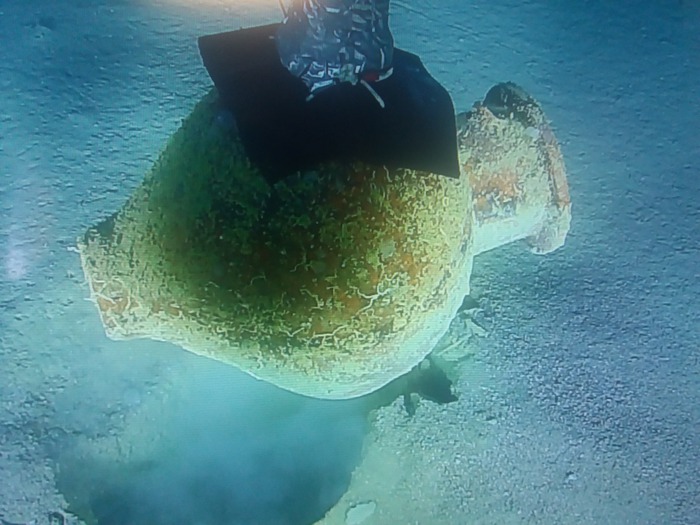(ANSA) - ROME, OCTOBER 16 - Amphoras and jugs but also a large quantity of fine ceramic wine cups destined for the table of the elites, still stacked and "packed" inside large jars used to protect them from the risk of accidents during the long journey in sea. In addition to food remains, such as olives. Recovered in the depths of the Otranto Channel at the incredible depth of 780 meters, the cargo of a Corinthian ship from the 7th century BC just studied in the laboratories of the National Superintendency for Underwater Heritage, sheds new light on the dawn of trade between Corinth and Magna Graecia. In fact, since its beginning dates back to the first years of the seventh century. to. C. "A great discovery that demonstrates the need to return to investing in underwater archeology",applauds the minister of culture Franceschini, who anticipates the ministry's intention to launch a project to bring to the surface all the other finds left at the bottom of the sea. Identified in 2018 as part of the operations for the construction of the TAP, the methane pipeline that brings Azerbaijan gas to Italy, the wreck of the ancient boat tells ANSA for a preview of the superintendent Barbara Davidde, was studied thanks to the preventive archeology law, so much so that the same recovery of the crockery object of the study, 22 objects in all, was financed by the works for the pipeline. The biggest surprise, however, came in the laboratory, when the experts of the superintendence cleaned and studied the collection of vases and bowls, realizing that it was such an ancient material.Because until now, Davidde explains, "it was not thought that between Magna Graecia and the mother country there could already be organized trade in this era". The recovery phase was also extraordinary. The archaeologists returned aboard an oceanographic vessel to the point of the Otranto Channel where the wreck was located, 22 miles from the coast, and there they documented the submerged treasure with underwater videos and photographs.and there they documented the submerged treasure with underwater videos and photographs.and there they documented the submerged treasure with underwater videos and photographs.
Then using a sort of cable-guided submarine and a special suction pump they managed to bring 22 of the more than 220 objects back to the surface.
(HANDLE).

